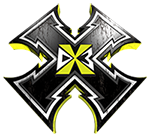Rotational Athlete Development
Proper Training Programs for the Rotational Athlete (ex. baseball, softball, tennis, golf, swimming)
Athletic Development and Sports Performance has to be approached from a developmental standpoint based on level, age, gender and purpose. It must be age-safe and age-appropriate. Basic Athletic Development fundamentals remain constant yet there are specific factors to be considered directly related to individual sport demands. These factors should be calculated and strategically implemented in order to safely meet the demands for the current and upcoming activity.
Training athletes for rotational sports requires a greater emphasis on balance in the development of the limbs, joints and core. Power is generated from the hips yet delivered to and by the limbs through the core and joints, which has to be accounted for when implementing a strength and speed training program.
We must keep in mind that different sports have different requirements to meet the specific rigors of that sport. Athleticism and speed can be taught, learned and practiced just as any motor skill yet the process of development should be carefully implemented based on anticipated competition, tests or performance.
The directional rotation adds another specific element of challenge for the rotational athlete as he or she becomes imbalanced due to the nature of their “one sided rotation” (right or left focus). This MUST be calculated and addressed through training protocols that begin with the proper warm up transitioning into training variations that build the necessary rotational capacity. Balancing rotational bouts and load has to be directly compensated for by performing equal and proportionate work on both sides of the body.
What all this means is if a baseball player throws and/or hits 200 times on their right side we absolutely must balance the body on the left side with adequate preparation, load and repetition. Injury frequently occurs for two primary reasons, overuse or lack of balanced training (undertraining) creating weakness and deficiency on one side of the body or a particular area. Over compensation due to weaknesses can be directly linked to overuse and/or opposing failure.
All of these factors must be considered when designing and implementing a training program for rotational athletes. Programs for the rotational athlete (baseball, softball, tennis, swimming, etc.) should include:
- Proper Warm Up – addressing the entire body
- Consistently developing fundamental strength and flexibility
- Dynamic Stretching – maintaining correct posture and rotation
- Start with the core, joints and fundamentals
- Rotator and scapula emphasis prior and post-training – rotations with bands
- Alternating position angles and stressors during training – front/back, left/right, push/pull
- Balancing single/double limb exercises – avoiding overloading
- Unloading the hips and shoulders post-training
- Weak-side compensation – addressing weak-side rotation with additional bouts as needed
- Wave loading periodization while maintaining year-round strength and conditioning
- Diversified training – keeping it interesting while training all aspects of the body thoroughly
- Maintaining athleticism during training at all times
At the end of the day, take time to teach, train smart and develop athletes with proper timing, form and progression understanding their exact needs. “It’s not about how much you know, it’s about how much you don’t know that is the issue.”
